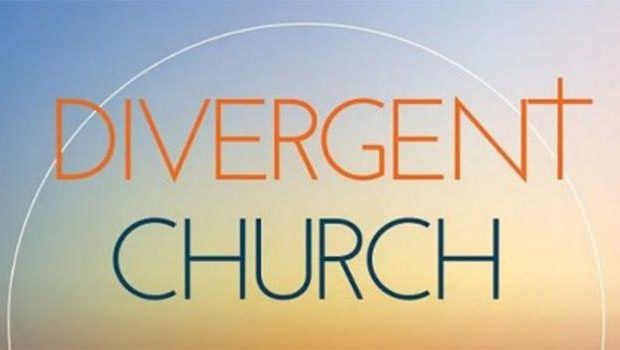
Divergent Church: The Bright Promise of Alternative Faith Communities
In November, Convergence was featured in a new book about alternative congregations. Below is an excerpt from the new book, Divergent Church: The Bright Promise of Alternative Faith Communities by Tim Shapiro and Kara Faris of the Center for Congregations in Indianapolis.
Dinner churches, cowboy churches, farm-to-table gatherings and much, much more. Across the United States, new and alternative ways of congregational life are emerging. Tim Shapiro and Kara Faris of the Center for Congregations in Indianapolis took a close look at a dozen of these creatively different congregations in their new book, “Divergent Church: The Bright Promise of Alternative Faith Communities.”
As the book’s subtitle suggests, the two found much to admire, Faris said.
“Today, the spiritual and congregational landscape in the United States is such that somebody’s got to innovate and take some risks and try to figure out how to make Christian life relatable,” she said.
The congregations she and Shapiro studied are doing just that, she said.
“They haven’t given up. They are driven by something outside of themselves to try this unusual thing.”
Although traditional forms of church are still greatly needed, “there are other ways,” Faris said.
Shapiro is the president of the Center for Congregations, and Faris, the center’s resource grants director and a resource consultant to congregations.
Faris spoke recently with Faith & Leadership about their book. The following is an edited transcript.
Q: What’s the role of innovation in these churches?
Built into the word “innovation” is a sense of risk taking. Major companies recognize the need to take risks. They know there will be risk and failure and learning, but it’s in pursuit of some long-term goal — profit or perfecting a craft or something — so the risk is accepted.
But in the religion world, we don’t have a place to give permission for risk taking in the way that some of these innovative clergy do. They are willing to take the risk of, for example, being criticized by their denominational counterparts or by others in the Christian world.
I respect the heck out of their willingness to take a risk. They’re not getting a whole lot out of it. These aren’t big, fancy places. They don’t have big salaries. Some are sticking around long enough and meeting traditional metrics of success, like people in the seats and dollars in the bank.
But it is a conundrum. You can talk about welcoming the stranger, but if you don’t have a viable model to pay for the cowboy pastor, how do you make it happen? In the religion world, that sense of innovation doesn’t happen on such a formalized level.
People can be skeptical: “This is a flash in the pan and isn’t lasting. How are they successful? Show me their metrics.”
Part of my response to that is, yes, it looks different and it’s innovative. It might even seem kooky, and it may not last. But what they’re doing is deeply rooted in tried-and-true faith practices.
Today, the spiritual and congregational landscape in the United States is such that somebody’s got to innovate and take some risks and try to figure out how to make Christian life relatable.
Q: The book says that “meaning making” is one the most deeply innovative aspects of these churches but that many congregations today are so focused on surviving, they’ve lost the ability to do that. Speak some to that.
My hunch is that for many congregations, everything worked well in a different generation, where institutions matched the social fabric. There was a social capital that matched the world that people experienced in their work and in their social life.
That memory gets ingrained and passes from generation to generation but doesn’t get updated. So many congregations get in this pickle where their numbers are dwindling. They’ve got this rich history and a great facility, but they’re in a quagmire about how to stay alive.
Even if they have enough money, they may lack vitality or purpose or identity. They can genuinely want to figure it out and be relevant, but it’s hard to dislodge people from an ingrained way of being.
You get good at doing what you know. It’s not that it’s bad, but they haven’t found a compelling reason to do something different.
Excerpt from an interview in Faith and Leadership. Find the rest of the interview here>>>





